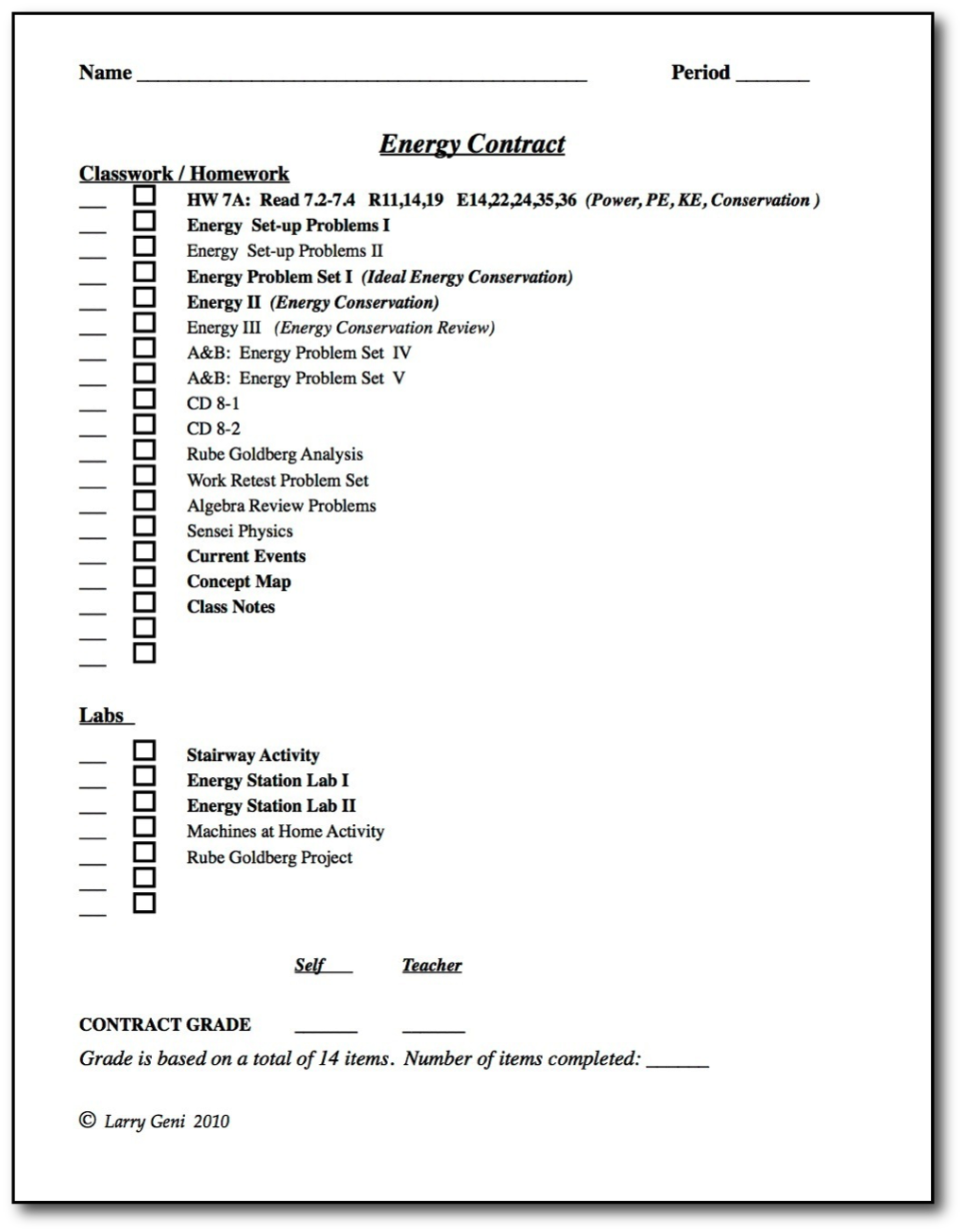When students work on learning contracts, they can evaluate each individual item they worked on as well as the entire contract. Furthermore, for each contract item, they can evaluate 1) their mastery of the content and/or 2) how well they worked through the process (i.e., making deadlines, completeness, correct format, etc.).
When evaluating a short minicontract, (say, for one or two class periods of open work time), an evaluation of the entire contract may not be necessary or appropriate. On the other hand, when evaluating a three week unit contract, an evaluation of the entire contract provides an important overview of how successfully each student is doing the process of learning.
On the next page is a form I created to define guidelines for self-assessment of all the work found in a unit, as well as the rules for self-evaluating the entire contract itself. for clarity, an example of a typical unit contract follows the form.
After evaluating each item that they accomplished, they would give themselves an overall contract grade, located at the bottom of the unit contract. This grade would be based on their evaluation of each item and how many items they completed, with a penalty for not completing the minimum number — in this case, 14 items. Not completing required items caused a further grade penalty.
While it is possible to fully quantize this kind of overall contract evaluation, my emphasis on removing points from the classroom caused me to intentionally make the process “fuzzier”. While there were well-defined guidelines — “missing a required item on the contract lowers the contract grade by one letter” — I asked students to use common sense in balancing all the factors going into the grade. I did not create a specific weighting structure for the individual items on the contract, even though some items were much more important or challenging than others, but rather asked them to do that balancing on their own. Since I also gave each contract a grade, (located right next to theirs on the bottom of the page), any significant differences in their evaluation and mine became immediately obvious and led to a conversation about that discrepancy. Sometimes, those conversations proved important in challenging a student’s continued habits of doing school.
Here is another example of a contract evaluation scheme. In this case, it is mastery that is being evaluated. (Thanks to Vanessa Brechtling of Niles West High School).




